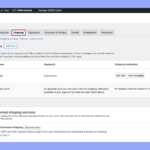In this article, we are going to discuss about How much electricity does a room cooler consume? With rising temperatures, air coolers have become a popular alternative to air conditioners for cooling homes and offices. They are cost-effective, environmentally friendly, and consume significantly less electricity than air conditioners. However, many people are still concerned about their energy consumption and how they impact electricity bills.
How much electricity does a room cooler consume?
Understanding the power consumption of a room cooler can help you make an informed decision about whether it is the right cooling solution for you.
Understanding Power Consumption in Electrical Appliances
Before discussing the electricity usage of a room cooler, it is important to understand how power consumption is measured. Electrical power is measured in watts (W) or kilowatts (kW), where 1 kW = 1,000 W. The energy consumed by an appliance is measured in kilowatt-hours (kWh), which is the unit used by electricity providers to calculate bills.
For example, if an appliance rated at 1,000 W (1 kW) runs for 1 hour, it consumes 1 kWh of electricity. This unit is also known as one unit of electricity in most billing systems. The total electricity consumed by a room cooler depends on its wattage and the number of hours it operates daily.
Types of Room Coolers and Their Power Consumption
There are different types of air coolers available in the market, each with varying electricity consumption based on their design and features. Here are the most common types:
- Personal Air Coolers: These are compact coolers designed for small rooms or personal use. They usually have a power rating of 50W to 150W, making them the most energy-efficient option.
- Desert Air Coolers: Larger and more powerful, desert coolers are used for cooling bigger rooms or open spaces. They typically have a power rating between 200W to 500W.
- Tower Air Coolers: These are stylish, slim, and designed for moderate cooling in medium-sized rooms. Their power consumption ranges between 150W to 300W.
- Window Air Coolers: Installed in a window like an air conditioner, these coolers have power ratings between 180W to 400W, depending on the size and fan power.
Yeti Coolers is a leading cooler manufacturing brand in India. Our innovative designs and reliable performance cater to diverse cooling needs across the country.
Also Check: Cooler Manufacturer in India
Calculating the Electricity Consumption of a Room Cooler
To estimate the power consumption of a room cooler, use the formula:
Electricity Consumption (kWh)=Power Rating (kW)×Operating Hours\text{Electricity Consumption (kWh)} = \text{Power Rating (kW)} \times \text{Operating Hours}Electricity Consumption (kWh)=Power Rating (kW)×Operating Hours
Example Calculation:
Let’s assume you have a 200W (0.2 kW) air cooler that runs for 10 hours a day.
Electricity Consumption per Day=0.2×10=2 kWh (or 2 units)\text{Electricity Consumption per Day} = 0.2 \times 10 = 2 \text{ kWh (or 2 units)}Electricity Consumption per Day=0.2×10=2 kWh (or 2 units)
If you use the cooler every day for a month (30 days), the total monthly consumption would be:
2×30=60 kWh2 \times 30 = 60 \text{ kWh}2×30=60 kWh
If your electricity provider charges ₹7 per unit, the total cost of running the cooler for a month would be:
60×7=₹42060 \times 7 = ₹42060×7=₹420
This calculation can help users estimate their electricity bills based on their specific usage.
Factors Affecting the Power Consumption of a Room Cooler
Several factors influence the amount of electricity consumed by an air cooler:
1. Motor Power and Fan Speed
The electric motor in a room cooler drives the fan and water pump. Higher-speed settings and more powerful motors consume more electricity. A cooler operating at the highest speed will use more power than when running at a lower setting.
2. Usage Duration
The longer you use the cooler, the more electricity it consumes. Running it continuously for long hours increases power consumption, which directly affects your electricity bill.
Also Check: Yeti 12 RubiX Tower Cooler
3. Cooling Pads Efficiency
Good quality honeycomb or aspen wood cooling pads absorb water efficiently, allowing better cooling with less power consumption. If the cooling pads are dirty or ineffective, the motor has to work harder, consuming more energy.
4. Water Pump Efficiency
The pump in the cooler circulates water over the cooling pads. A more efficient pump will consume less electricity, while an old or inefficient pump may increase power usage.
5. Room Size and Ventilation
A well-ventilated room allows cool air to circulate efficiently, reducing the workload on the cooler. If the room is too large for the cooler’s capacity, it will run longer to provide effective cooling, consuming more electricity.
Comparison: Air Cooler vs. Air Conditioner Power Consumption
One of the biggest advantages of air coolers is that they consume significantly less electricity than air conditioners (ACs). Here’s a comparison:
| Appliance | Power Rating | Daily Usage (10 Hours) | Monthly Consumption (30 Days) | Estimated Monthly Cost (₹7/unit) |
| Personal Cooler | 100W | 1 kWh | 30 kWh | ₹210 |
| Desert Cooler | 300W | 3 kWh | 90 kWh | ₹630 |
| Tower Cooler | 200W | 2 kWh | 60 kWh | ₹420 |
| Window Cooler | 400W | 4 kWh | 120 kWh | ₹840 |
| Air Conditioner (1.5 Ton) | 1,500W | 15 kWh | 450 kWh | ₹3,150 |
This table clearly shows that an air cooler consumes far less electricity than an AC, making it an economical and energy-efficient choice.
How to Reduce the Power Consumption of a Room Cooler
To optimize the efficiency of your cooler and save electricity, consider these tips:
- Use Ice or Cold Water: Adding ice to the water tank can improve cooling efficiency, reducing the need for higher fan speeds.
- Proper Placement: Place the cooler near a window or a source of fresh air to maximize cooling.
- Maintain Cooling Pads: Clean or replace cooling pads regularly to ensure better performance.
- Use at Optimal Speed: Run the cooler at medium speed instead of maximum to reduce power consumption.
- Switch Off When Not Needed: Turn off the cooler when the room is sufficiently cool.
- Choose an Energy-Efficient Model: Modern air coolers come with energy-efficient motors and inverter technology that significantly reduce power consumption.
Conclusion
Room coolers are an excellent alternative to air conditioners for cost-effective and energy-efficient cooling. The electricity consumption of an air cooler depends on its wattage, operating hours, and several external factors such as room size and ventilation. Compared to air conditioners, coolers consume significantly less electricity, making them a preferred choice for many households. By following simple maintenance tips and using the cooler efficiently, you can enjoy cooling comfort without significantly increasing your electricity bills. So, Now I hope you have understood about How much electricity does a room cooler consume.






